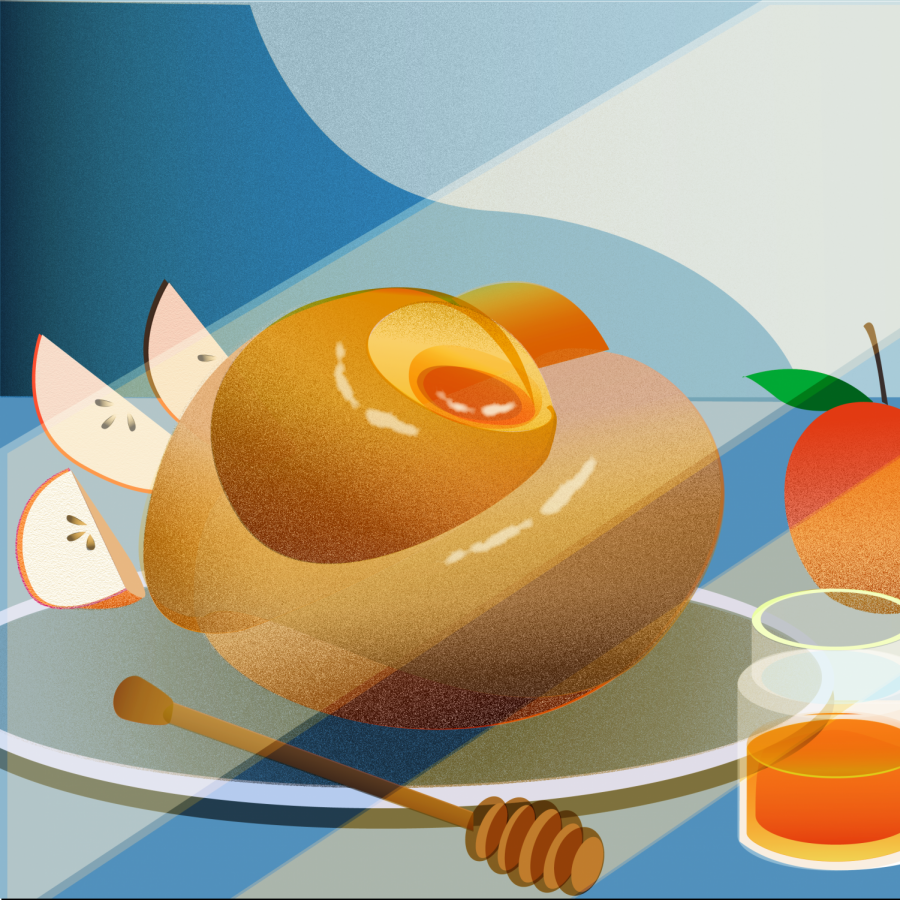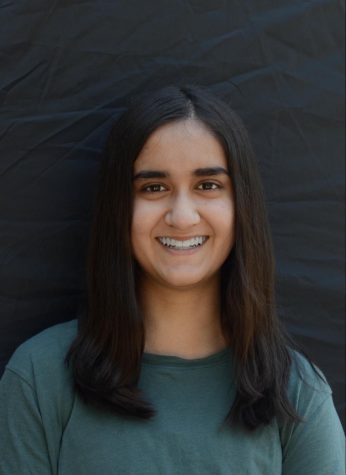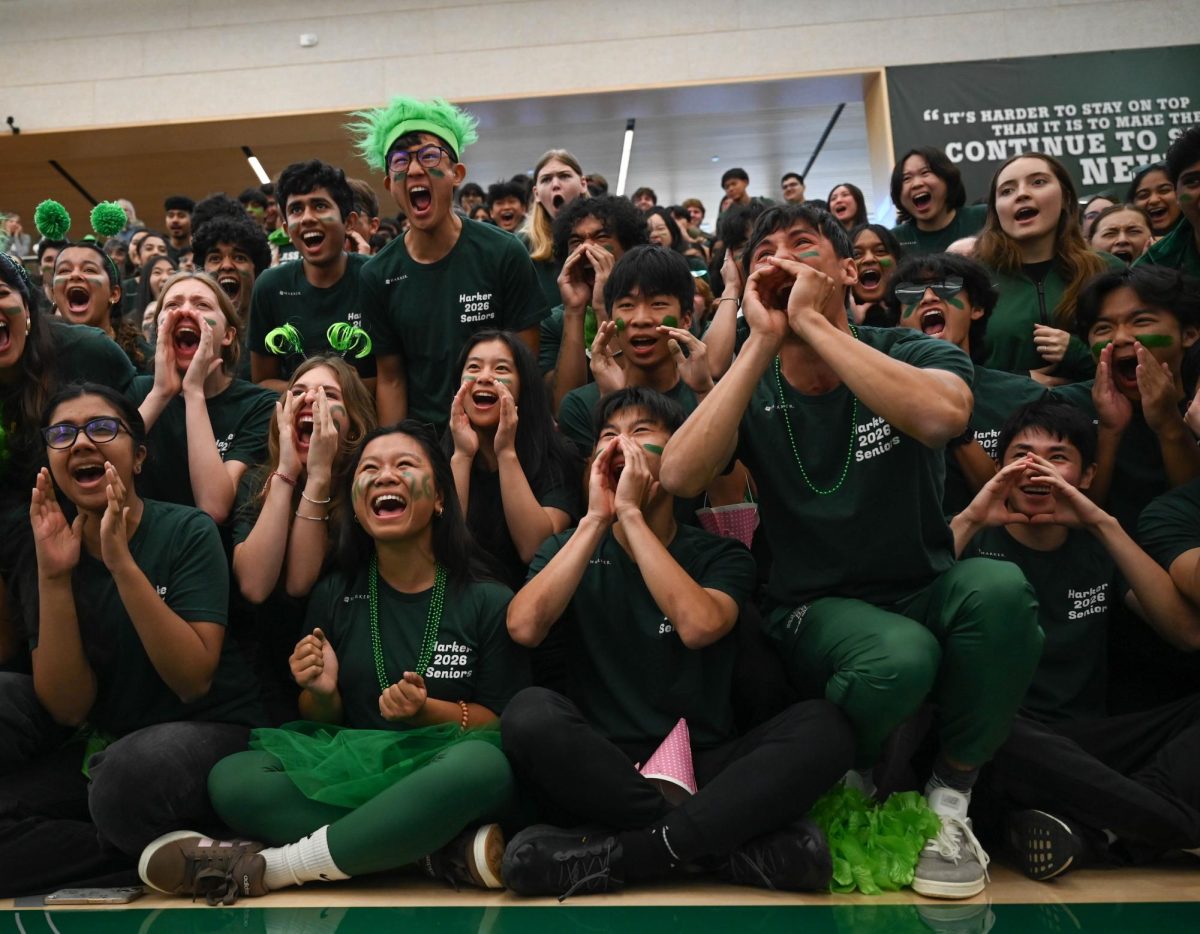Celebrating Jewish holidays: Students and faculty celebrate Rosh Hashanah and Yom Kippur
Bright red apples dipped in rich, golden honey and a spiraling challah, or type of bread, sit on a table as part of a celebration of Rosh Hashanah, a Jewish holiday where observers celebrate the start of a new year. Both of these foods are intrinsic traditions of this holiday.
October 3, 2020
Bright red apples dipped in rich, golden honey and spiraling challah, a type of bread, sit on a table as part of a celebration of Rosh Hashanah, a Jewish holiday where observers celebrate the start of a new year. Both of these foods are intrinsic traditions of this holiday.
Jewish people welcome the Jewish New Year on Rosh Hashanah. On this holiday, many people attend services to participate and celebrate. This year, Rosh Hashanah took place from Friday, Sept.18 to Sunday, Sept. 20 and some services have taken place virtually.
“How we usually celebrate it is we attend services at our synagogue, generally both the evening before and then the morning of, and … it’s a mixture of traditional prayers, and then the morning of Rosh Hashanah, reading from the Torah,” Dr. Julie Turchin, upper school psychology teacher who identifies as Reform Jewish, said.
Another integral aspect of Rosh Hashanah is Tashlik, which is a ceremony that takes place during the ten days between Rosh Hashanah and Yom Kippur, the Day of Atonement. While Dr. Turchin does not believe the following, some believe that during these ten days, God decides who will live and who will die in the next year. As a result, people apologize for their sins and start a new year in the Tashlik ceremony. At the synagogue that Turchin attends, a socially-distanced Tashlik took place on the afternoon of Rosh Hashanah.
“Tashlik is where you basically think about what your sins were or what you did in the past year that you’d like to do differently next year and kind of create a clean slate for yourself by symbolically throwing that past year away into generally a natural body of water, so that takes the form of literally having a brief service and then walking to a stream or lake and dropping a pebble or two or three into the stream,” Dr. Turchin said.
Rosh Hashanah also involves eating challah, a type of bread, which is shaped like a circle for this specific holiday. It is sometimes eaten with raisins to sweeten the bread. People also usually eat sweet foods, such as apples and honey, on this day to welcome a sweet year.
“For my family, for example, we sometimes have dinner on Rosh Hashanah, … [and] there are specific meals that you would eat,” Julia Yusupov (12), who identifies as an atheist and ethnically Jewish, said. “There’s a fish, I think it’s fish head, and there’s pomegranate, and there’s also apples with honey, and it’s supposed to symbolize the start of a sweet new year.”
There can also be variations to the apples and honey dish.
“My wife happened to make honey cakes, some nice honey cupcakes, so [apples and honey are] a pretty common dessert to have on Rosh Hashanah,” Dr. Victor Adler, upper school mathematics teacher who identifies as an Agnostic Jew, said.
Yom Kippur, the Day of Atonement, is a holiday on which people can choose to participate in a fast for 24 hours. It occurs after Rosh Hashanah, and this year, Yom Kippur took place from Sunday, Sept. 27 to Monday, Sept. 28.
“[My Jewish friends and I] sat down and we talked about all the reflections and all the memories we had and the resting that we had throughout the day even though I didn’t fully participate [in the fasting],” Julia said. “My friends did, though, so it was cool to see it from their perspective.”
Children under 13 years of age do not need to fast, and fasting is not allowed for those with medical problems that may stop them from doing so. In addition, at the synagogue that Turchin attends, services for Yom Kippur this year were online, either live over Zoom or recorded. There are usually services in the morning and evening, and lectures in the afternoon. The fasting continues throughout the day, and people can break their fast at sundown.
“For some people the idea [of fasting] is, you’re thinking just about yourself and your relationship with God,” Dr. Turchin said. “For me, personally, it’s a mixture of a little bit of atonement … but also quite frankly appreciating that there are people who don’t have enough to eat on a daily basis once a year [and] remembering what hunger feels like … and a lot of people make a donation to Second Harvest [Food Bank] in the amount of whatever the food would’ve been that they would’ve eaten that day essentially.”
Even for those who do not consider themselves very religious, celebrating and participating in these holidays still has an impact on them, as it means connecting to the traditions and culture of those who came before.
“I think it just means connecting with, maybe not specifically to me because I’m not super Jewish, but connecting to my grandparents and their parents, what was important to them, which I think is important,” Grace Hoang (10), who identifies as Reform Jewish, said.
Celebrating and participating in these holidays together also has an impact on the community as a whole, as it provides an opportunity to think about the past, talk with the community, and make new memories.
“I think a big way that teenagers and Jews who are less religious now celebrate it, such as myself, it’s more of a coming-together of the Jewish community,” Julia said. “It’s kind of like remembering and recognizing some of the important things that have happened in our family histories, and I think it’s really powerful.”


















![“[Building nerf blasters] became this outlet of creativity for me that hasn't been matched by anything else. The process [of] making a build complete to your desire is such a painstakingly difficult process, but I've had to learn from [the skills needed from] soldering to proper painting. There's so many different options for everything, if you think about it, it exists. The best part is [that] if it doesn't exist, you can build it yourself," Ishaan Parate said.](https://harkeraquila.com/wp-content/uploads/2022/08/DSC_8149-900x604.jpg)




![“When I came into high school, I was ready to be a follower. But DECA was a game changer for me. It helped me overcome my fear of public speaking, and it's played such a major role in who I've become today. To be able to successfully lead a chapter of 150 students, an officer team and be one of the upperclassmen I once really admired is something I'm [really] proud of,” Anvitha Tummala ('21) said.](https://harkeraquila.com/wp-content/uploads/2021/07/Screen-Shot-2021-07-25-at-9.50.05-AM-900x594.png)







![“I think getting up in the morning and having a sense of purpose [is exciting]. I think without a certain amount of drive, life is kind of obsolete and mundane, and I think having that every single day is what makes each day unique and kind of makes life exciting,” Neymika Jain (12) said.](https://harkeraquila.com/wp-content/uploads/2017/06/Screen-Shot-2017-06-03-at-4.54.16-PM.png)








![“My slogan is ‘slow feet, don’t eat, and I’m hungry.’ You need to run fast to get where you are–you aren't going to get those championships if you aren't fast,” Angel Cervantes (12) said. “I want to do well in school on my tests and in track and win championships for my team. I live by that, [and] I can do that anywhere: in the classroom or on the field.”](https://harkeraquila.com/wp-content/uploads/2018/06/DSC5146-900x601.jpg)
![“[Volleyball has] taught me how to fall correctly, and another thing it taught is that you don’t have to be the best at something to be good at it. If you just hit the ball in a smart way, then it still scores points and you’re good at it. You could be a background player and still make a much bigger impact on the team than you would think,” Anya Gert (’20) said.](https://harkeraquila.com/wp-content/uploads/2020/06/AnnaGert_JinTuan_HoHPhotoEdited-600x900.jpeg)

![“I'm not nearly there yet, but [my confidence has] definitely been getting better since I was pretty shy and timid coming into Harker my freshman year. I know that there's a lot of people that are really confident in what they do, and I really admire them. Everyone's so driven and that has really pushed me to kind of try to find my own place in high school and be more confident,” Alyssa Huang (’20) said.](https://harkeraquila.com/wp-content/uploads/2020/06/AlyssaHuang_EmilyChen_HoHPhoto-900x749.jpeg)












